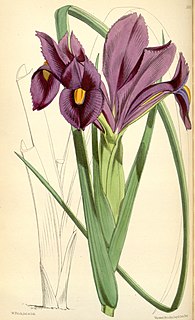Related Research Articles
MATLAB is a proprietary multi-paradigm programming language and numeric computing environment developed by MathWorks. MATLAB allows matrix manipulations, plotting of functions and data, implementation of algorithms, creation of user interfaces, and interfacing with programs written in other languages.

The genus Marburgvirus is the taxonomic home of Marburg marburgvirus, whose members are the two known marburgviruses, Marburg virus (MARV) and Ravn virus (RAVV). Both viruses cause Marburg virus disease in humans and nonhuman primates, a form of viral hemorrhagic fever. Both are Select agents, World Health Organization Risk Group 4 Pathogens, National Institutes of Health/National Institute of Allergy and Infectious Diseases Category A Priority Pathogens, Centers for Disease Control and Prevention Category A Bioterrorism Agents, and are listed as Biological Agents for Export Control by the Australia Group.

Acarapis woodi is an internal parasite affecting honey bees, the symptoms of infestation was originally observed on the Isle of Wight in 1904, but was not described until 1921. Acarapis woodi mites live and reproduce in the tracheae of the bees. The symptoms of Acarapis woodi infestation were originally called by beekeepers as the Isle of Wight Disease, however it is now called Acarine, after the Subclass to which the mites belong. All mites are arachnids like spiders. The female mite attaches 5–7 eggs to the tracheal walls, where the larvae hatch and develop in 11–15 days to adult mites. The mites parasitize young bees up to two weeks old through the tracheal tube openings. There, they pierce the tracheal tube walls with their mouthparts and feed on the haemolymph of the bees. More than a hundred mites can populate the tracheae and weaken the bees. The mites are generally less than 175 micrometres (0.007 in) long, and can only be seen and identified under a microscope.

Dust bunnies, in American English, are small clumps of dust that form under furniture and in corners that are not cleaned regularly. They are made of hair, lint, dead skin, spider webs, dust and sometimes light rubbish and debris and are held together by static electricity and felt-like entanglement. They can house dust mites or other parasites and can lower the efficiency of dust filters by clogging them. The movement of a single large particle can start the formation of a dust bunny.

The golden mantella is a small, terrestrial frog endemic to Madagascar. It has an extremely restricted distribution in three distinct areas centered on the town of Moramanga - Beparasy and Ambohibary Communes, Torotorofotsy Wetland northwest of Andasibe, and in the area of Ambakoana. Mantella aurantiaca is one of Madagascar's most threatened amphibian species due to its limited distribution in an area under tremendous anthropogenic pressure. It may also be threatened by over-collection for the pet trade.

Cecidophyopsis ribis is an eriophyid mite which is best known for being a plant parasite, a pest of Ribes species, the genus that includes gooseberries and blackcurrants.

Quebec is one of the thirteen provinces and territories of Canada. The House of Commons of Canada passed a symbolic motion in 2006, in quasi-unanimity, recognizing the "Québécois as a nation within a united Canada".

Anisoptera costata is an endangered species of plant in the family Dipterocarpaceae. The name costata is derived from Latin and describes the prominent venation of the leaf blade. A huge emergent tree up to 65 m high, it is found in evergreen and semi-evergreen lowland tropical seasonal forests of Indo-Burma and in mixed dipterocarp forests of Malesia.
Rhodacaridae is a family of mites in the order Mesostigmata.
In the 10th edition of Systema Naturae, Carl Linnaeus classified the arthropods, including insects, arachnids and crustaceans, among his class "Insecta". Wingless arthropods were brought together under the name Aptera.
The Cima Coppi is the title given to the highest peak in the yearly running of the Giro d'Italia, one of cycling's Grand Tour races. The mountain that is given this title each year awards more mountains classification points to the first rider than any of the other categorized mountains in the race.

The Míting Internacional d'Atletisme Ciutat de Barcelona is an annual athletics meeting held at the Estadi Olímpic Lluís Companys in Barcelona, Catalonia, Spain. The Meeting was held annually from 1982 to 1990, in 1993 and annually from 1998 to 2000. Before 1990 it was held at Estadio Municipal Joan Serrahima. Re-established in 2008, it is usually held in mid-July. In 2011 it was a European Athletics premium meeting. The 2017 and 2018 editions returned to Estadio Municipal Joan Serrahima.
Syringophilidae is a family of mites, containing the following genera:
Diospyros venosa is a tree in the family Ebenaceae. It is native to Southeast Asia, from the Maluku Islands to Myanmar. It provides raw material for handicrafts, traditional medicine and fuel.
The Siamese rock gecko is a species of geckos. It is endemic to Thailand. No subspecies are listed.

Iris filifolia is a species in the genus Iris, it is also in the subgenus Xiphium. It is a bulbous perennial from North Africa and Europe. It has thin leaves, summer flowers in shades of red-purple.

Fromia ghardaqana, common name Ghardaqa sea star, is a species of marine starfish in the family Goniasteridae.

Tetranychoidea is a superfamily of mites in the order Trombidiformes. There are about 5 families and more than 2,200 described species in Tetranychoidea.
Corydalus amazonas is a species of dobsonfly in the genus Corydalus. It is endemic to Brazil.
References
- ↑ Smiley, R.L.; Whitaker, J.O. Jr (1979). "Mites of the genus pygmephorus" (PDF). Acta Zoologica Academiae Scientiarum Hungaricae. XXV 3-4 (25): 383–408. Archived from the original (PDF) on 20 March 2017. Retrieved 11 April 2017.CS1 maint: discouraged parameter (link)
- ↑ Bisby F.A.; Roskov Y.R.; Orrell T.M.; Nicolson D.; Paglinawan L.E.; Bailly N.; Kirk P.M.; Bourgoin T.; Baillargeon G.; Ouvrard D. (red.) (2011). "Species 2000 & ITIS Catalogue of Life: 2011 Annual Checklist". Species 2000: Reading, UK. Retrieved 11 April 2017.CS1 maint: discouraged parameter (link)